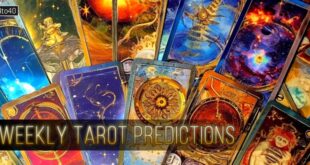 Termite — Termites, sometimes known as white ants, are a group of social insects usually classified at the taxonomic rank of order Isoptera. Termites usually prefer to feed on dead plant material, generally in the form of wood, leaf litter, or soil, and about 10% of the 4,000 odd species (about 2,600 taxonomically known) are economically significant as pests that can cause serious structural damage to buildings, crops or plantation forests. Termites are major detrivores, particularly in the subtropical and tropical regions, and their recycling of wood and other plant matter is of considerable ecological importance.
Termite — Termites, sometimes known as white ants, are a group of social insects usually classified at the taxonomic rank of order Isoptera. Termites usually prefer to feed on dead plant material, generally in the form of wood, leaf litter, or soil, and about 10% of the 4,000 odd species (about 2,600 taxonomically known) are economically significant as pests that can cause serious structural damage to buildings, crops or plantation forests. Termites are major detrivores, particularly in the subtropical and tropical regions, and their recycling of wood and other plant matter is of considerable ecological importance.
As social insects, termites live in colonies that, at maturity, number from several hundred to several million individuals. They are a prime example of decentralised, self-organised systems using swarm intelligence and use this cooperation to exploit food sources and environments that could not be available to any single insect acting alone. A typical colony contains nymphs (semi-mature young), workers, soldiers, and reproductive individuals of both genders, sometimes containing several egg-laying queens.
A female that has flown, mated and is producing eggs, is called a “Queen”. Similarly, a male that has flown, mated and remains in proximity to a queen, is termed a “King”. These anthropocentric terms have caused great misunderstanding of colony dynamics. Research using genetic techniques to determine relatedness of colony members is showing that the idea that colonies are headed by a monogamous royal pair is at least sometimes incorrect. Multiple pairs of reproductives within a colony are not uncommon, but for the families Rhinotermitidae and Termitidae, at least, sperm competition does not seem to occur (male genitalia are very simple and the sperm are anucleate), suggesting that only one male (king) generally mates within the colony.
The soldier caste has anatomical and behavioural specializations, primarily useful against ant attack. The proportion of soldiers within a colony varies both within and among species. Many soldiers have jaws so enlarged that they cannot feed themselves, but instead, like juveniles, are fed by workers. The pan-tropical sub family Nasutitermitinae (which should probably have the South American species separated) have soldiers with the ability to exude noxious liquids through either a horn-like nozzle (nasus) or simple hole in the head (fontanelle). Fontanelles which exude defensive secretions are also a feature of the family Rhinotermitidae. Many species are readily identified using the characteristics of the soldiers’ heads, mandibles, or nasus. Among the drywood termites, a soldier’s globular (“phragmotic”) head can be used to block their narrow tunnels. Termite soldiers are usually blind, but in some families, soldiers developing from the reproductive line have at least partly functional eyes.
Termites are generally grouped according to their feeding behaviour. Thus the commonly used general groupings are: Subterranean, Soil-feeding, Drywood, Dampwood and Grass eating. Of these, subterraneans and drywoods are primarily responsible for damage to human structures.
All termites eat cellulose in its various forms as plant fiber. Cellulose is a rich energy source (think of the amount of energy released when wood is burned), but remains difficult to digest. Termites rely primarily upon symbiotic protozoa (metamonads) such as Trichonympha, and other microbes in their gut to digest the cellulose for them, absorbing the end products for their own use. Gut protozoa such as Trichonympha, in turn rely on symbiotic bacteria embedded on their surfaces to produce some of the necessary digestive enzymes. This relationship is one of the finest examples of mutualism among animals. Most so called “higher termites”, especially in the Family Termitidae can produce their own cellulose enzymes. However, they still retain a rich gut fauna with bacteria dominant. Due to closely related bacterial species, it is strongly presumed that the termites’ gut flora are descended from the gut flora of the ancestral wood-eating cockroaches, like those of the genus Cryptocercus.
 Kids Portal For Parents India Kids Network
Kids Portal For Parents India Kids Network
